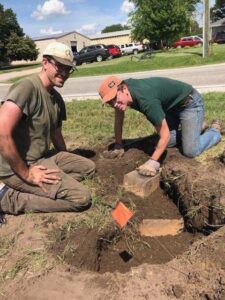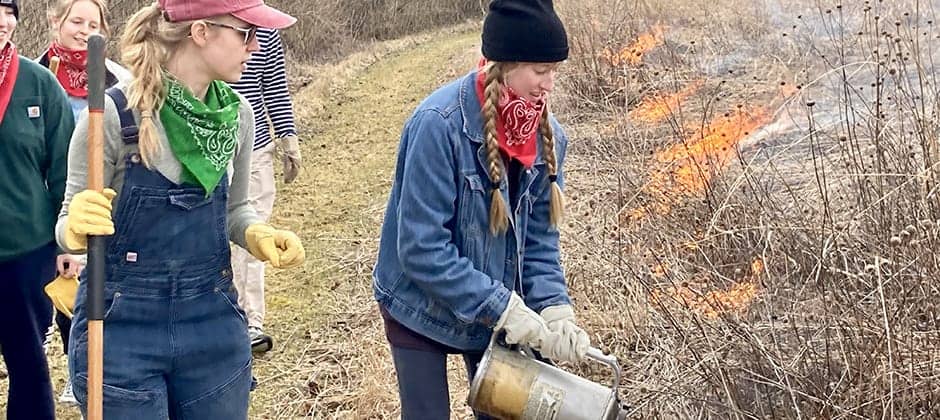Share this article
How to make the field safer, more inclusive for LGBTQ+ wildlifers
Plenty of research papers have covered some of the overarching institutional barriers faced by marginalized groups—like those belonging to the LBGTQ+ community—in environmental sciences, but those papers have often overlooked the individual safety challenges they can face, especially when it comes to conducting fieldwork.
Nathan Alexander and Jaime Coon became aware of this lack of research while commiserating by text about the challenges they and other wildlifers have come across. “A lot of the recommendations out there fell short when it came to physical safety and survival,” said Coon, an assistant professor in biology and environmental sustainability at Earlham College in Indiana.
Alexander, a PhD candidate of natural resources and environmental sciences at the University of Illinois, has seen a gap in recommendations for LGBTQ+ inclusion firsthand. Some literature suggests it’s important to be out and visible, and that the lab should show that LGBTQ+ individuals are accepted. “That’s a great recommendation,” he said, but the problem goes deeper than that. “I have friends who were disowned or failed out of college because they didn’t have the financial resources [for tuition] on campus.”
The two researchers came together and co-authored a paper not only highlighting some of these struggles but offering evidence-based suggestions for strategies to make the wildlife field safer and more inclusive for its LGBTQ+ members.

Nathan Alexander conducts fieldwork with colleagues. Credit: Courtesy Nathan Alexander
Before writing the research paper, Alexander and Coon created a working group including individuals in all different stages of their career with as many different backgrounds as they could find to make sure they weren’t just representing their own personal views.
Through these working groups, the researchers were able to match students with mentors—biologists who were further along in their careers but had shared similar experiences. In the group, the researchers discussed pressures they’ve faced to conform to co-workers’ ideas of sexuality and gender. “Not everyone conforms to those expectations, which can cause safety problems,” Coon said.
Coon said she conducts fieldwork in rural grassland areas, which she loves, but it comes with some safety concerns, including harassment and less trans-affirming health care. Confederate flags and political signs at a gas station may not faze some people, but for Alexander and a field technician he was working with in a small town in central Illinois, they created safety concerns about simply using the bathroom. It’s a conundrum, Coon said. Being closeted can lead to mental health struggles. Being “out” can result in physical threats.
The paper, published in the Journal of Applied Ecology, provides specific recommendations about how to handle many of these challenges. They begin the paper discussing what can be done on the structural and interpersonal levels. Then, they discuss resilience strategies that individual LGBTQ+ field workers can use.
One piece of advice Alexander provides to LGBTQ+ people in the field is to bring an object that’s small but symbolic to you that can connect you to your community and help you feel less alone, without outing yourself to everyone. Alexander brings a copy of The Picture of Dorian Gray to his fieldwork.
A more institutional suggestion they have is to not default to binary segregated field housing. “A lot of people feel left out, and it complicates things for individuals,” Coon said. “I meet with all of my students before fieldwork and talk about their needs with housing.” She stressed that it’s important to meet ahead of time to make everyone feel safe and comfortable.
The researchers stress that these recommendations go beyond just the wildlife and ecology fields. Nonbinary housing can be considered in places like community shelters as well. “I would argue they’re not separate issues at all,” Coon said.
The researchers also point out the role of intersectionality in many of these barriers. “One important thing to acknowledge here is, we are very limited in the amount of words, and we mostly limited the paper to the queer experience,” Coon said. “This is another step—a small way to contribute to make things better. I know institutions read academic journals, and lived experiences are listened to more when they’re citable. Putting it in a paper, I hope more people are willing to listen.”
Header Image: Jaime Coon conducts a prescribed burn with a student. Credit: Courtesy Jaime Coon








